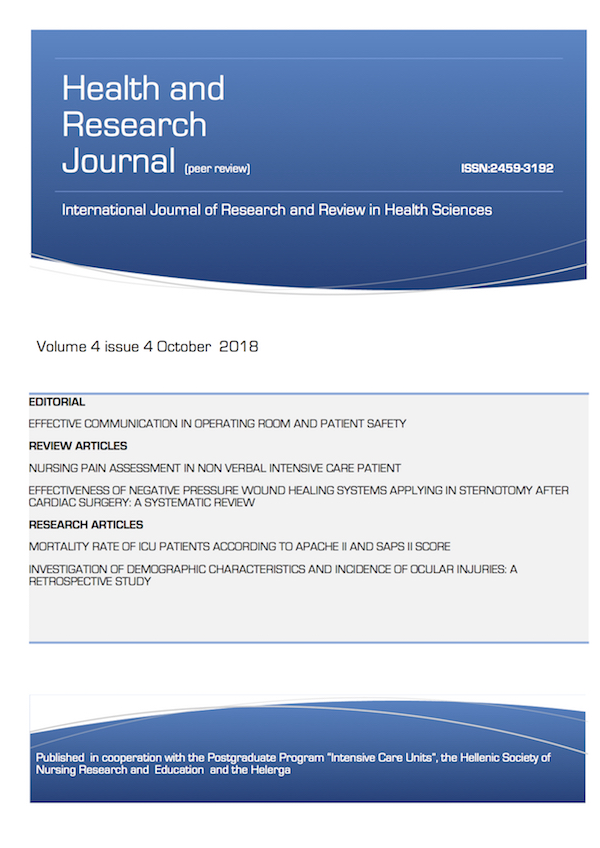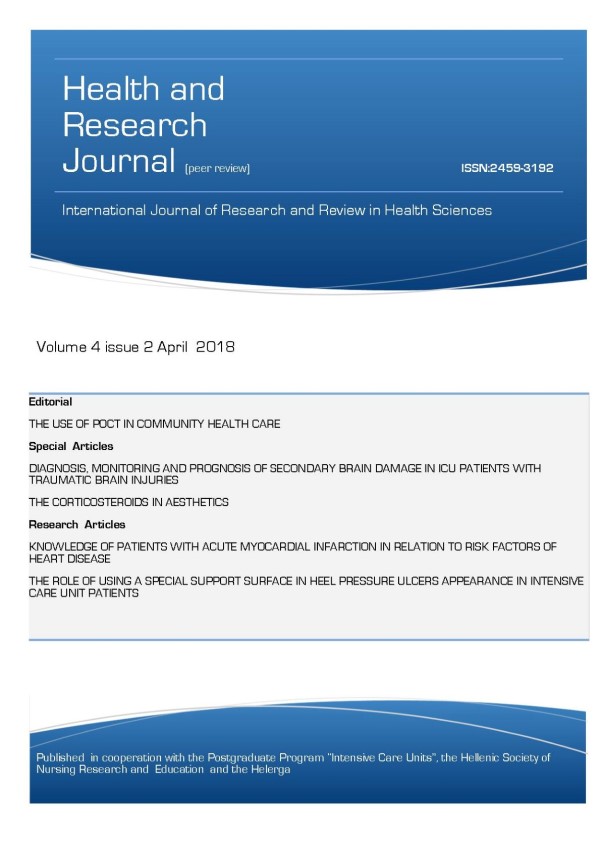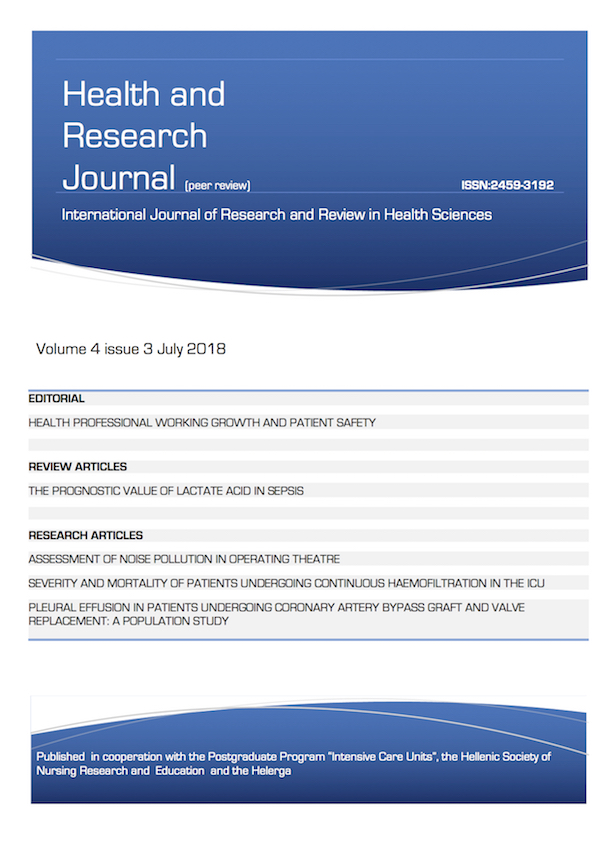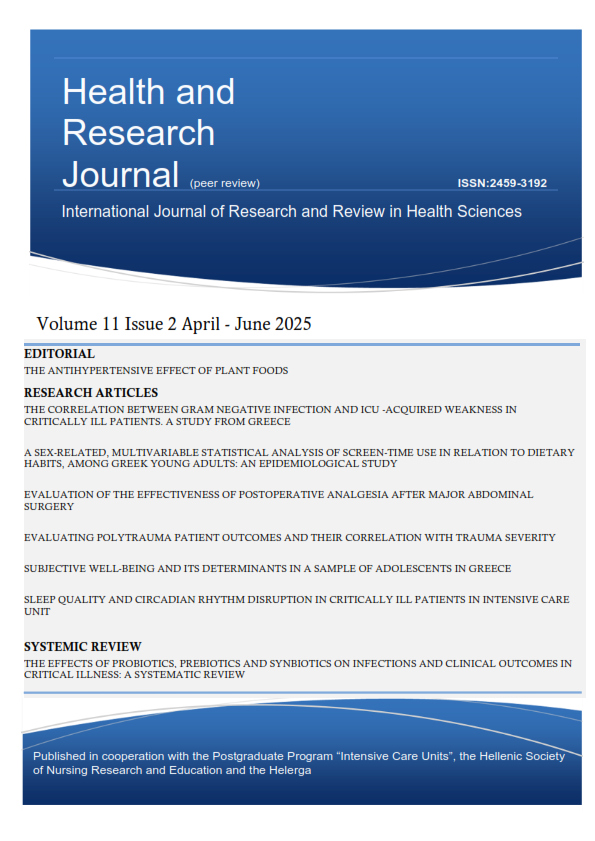Mortality rate of ICU patients according to APACHE II and SAPS II score

Abstract
Introduction: Two of the most important systems measuring the severity of disease classification in Intensive Care Unit (ICU) are APACHE II and SAPS II. The scores that the two systems generate can be the cause of increased mortality.
Aim: of subject study is to record mortality of 28 days in ICU of a Hospital located in Piraeus and to investigate its dependence on the variables APACHE II and SAPS II.
Material and Methods: Population of the study consisted of 200 patients, older than 18 years, admitted to ICU. The application of normal distribution for continuous variables has been evaluated based on Kolmogorov-Smirnov parametric analysis.
Results: 62, 5% of the sample were male, while 37,5% were female. The average age of patients participating in the study was 58,02 years ± 19,085, average APACHE II score 22,33 ± 8,038 and average SAPS II score 37,03 ± 16,169. 51,5% of those patients were diagnosed with pathological problems, 25,5% with surgical problems and 23% had trauma. Mortality in ICU was 32%. The area below ROC curve for the prediction of mortality from APACHE II score was 0.748 (95% confidence interval: 0.684-0.808, p<0.001).
Conclusions : From the regression ran based on multiple confounding variables (age, gender, diagnosis, APACHE II and SAPS II scores) we conclude that mortality of 28 days in a polyvalent ICU is affected only by APACHE II score, which predicted independently (p= 0.036) the mortality of the patients of the present study.
Article Details
- How to Cite
-
Kostoglou, A., Kotanidou, A., Marvaki, C., & Orfanos, S. (2018). Mortality rate of ICU patients according to APACHE II and SAPS II score. Health & Research Journal, 4(4), 219–233. https://doi.org/10.12681/healthresj.19297
- Section
- Original Articles
Copyright notice:
The journal "Health and Research Journal" reserves the rights for copyright of the content of the website and also the copyright of the articles published.
By virtue of their appearance in this journal, the articles are free to be used for non-commercial purposes. However, the articles cannot and must not be used in anyway, published elsewhere or modified without any reference to the author and the first publication of the article.






